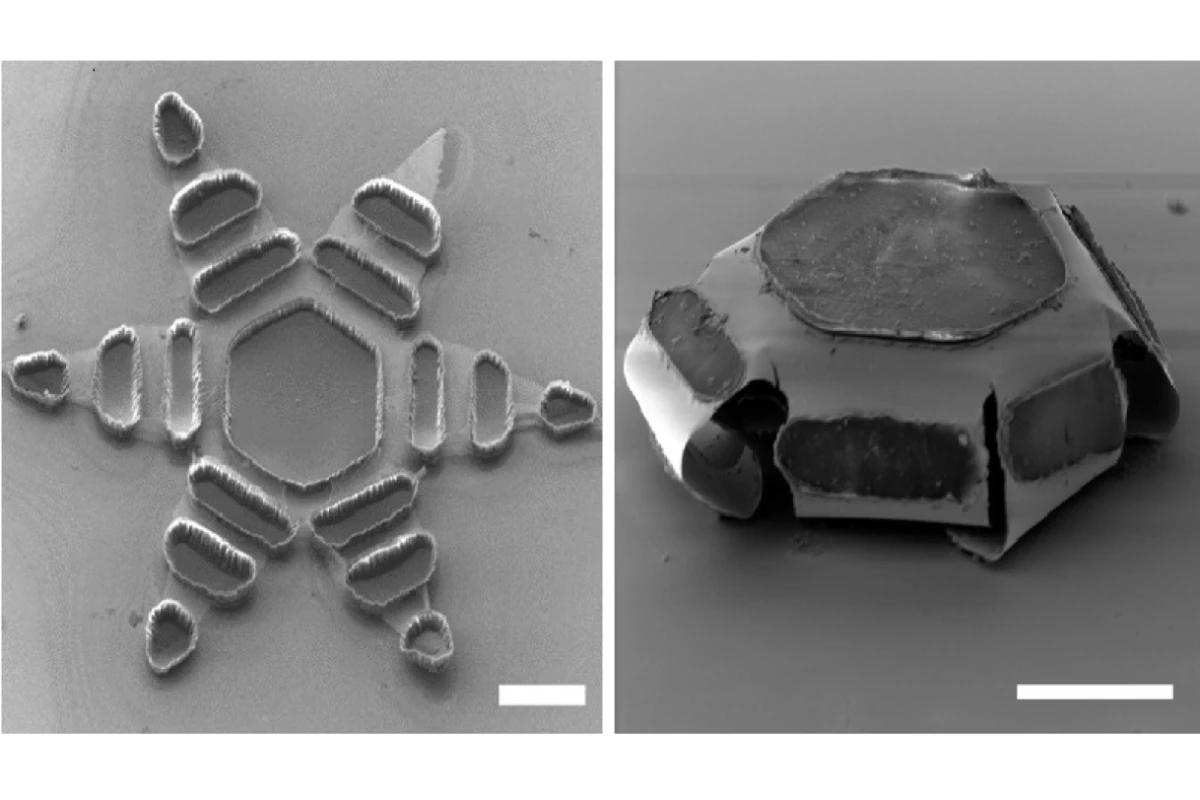One of the problems with gradual-release medications lies in the fact that the pills often pass through the body before all of the medication has been released. An experimental new technology addresses that problem, by copying an intestinal parasite.
The hookworm digs its teeth into the walls of a host organism's intestines, where it proceeds to firmly hang on while feeding on their blood. Inspired by the worm's attachment mechanism, scientists from Johns Hopkins University have created tiny drug-delivery devices known as "theragrippers."
About the size of a speck of dust, each one carries a pharmaceutical payload, and consists of a flat metal six-pointed body encased in a shape-changing chitosan film, which is in turn coated in a heat-sensitive paraffin wax.

After entering the gastrointestinal tract and reaching body temperature, the device's wax coating softens, releasing the previously flat film to revert to its default shape. In doing so, that film draws the six metal points inwards like claws, causing the theragripper to grasp onto the intestinal wall's mucous membrane.
It remains there until its medicinal payload has gradually dissolved and been passed into the body, after which it eventually loses its grip and is passed harmlessly with the feces. And because the individual theragrippers are so small, it is envisioned that thousands of them would be administered at once – either orally or rectally, depending on the condition being treated.
In lab tests conducted on rats and pigs, it was found that animals who had received a pain relief drug via the theragrippers ended up with considerably higher levels of the medication in their bloodstream, as compared to a control group that received it by conventional means. Additionally, whereas the drug stayed in the control group's bodies for just two hours, it remained in the theragripper group's systems for almost 12 hours.
A paper on the research – which is being led by David Gracias, PhD and Florin M. Selaru, MD – was recently published in the journal Science Advances.
Source: Johns Hopkins Medicine





